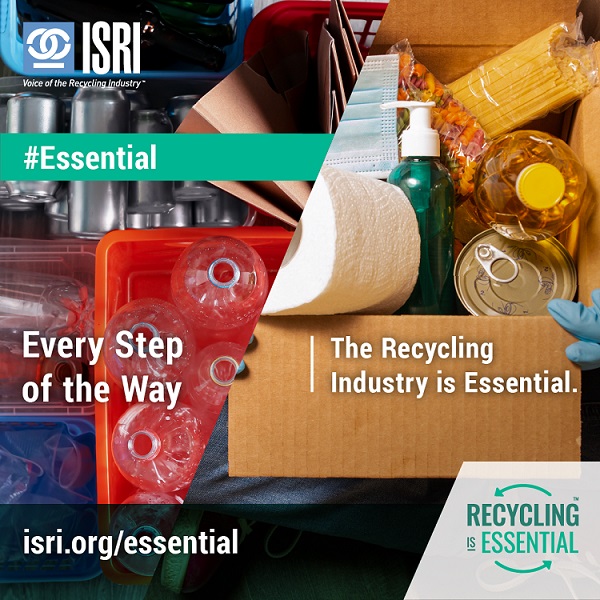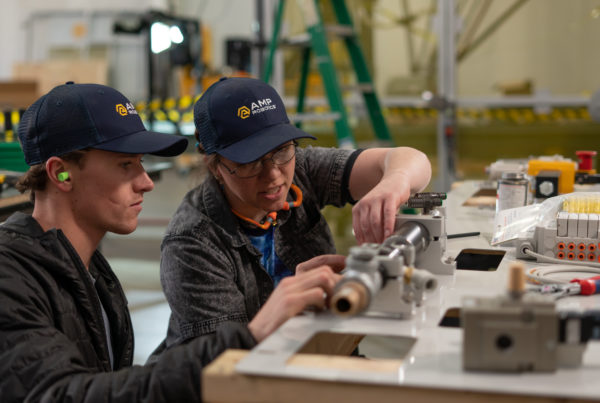Recycling is a Path for Community Economic Recovery
This week’s Industry Voices is a blog post by Danielle Waterfield, ISRI’s chief policy officer and assistant general counsel, about recycling being a path for community economic recovery.
The U.S. recycling industry is a sophisticated, capital-intensive industry that has been creating “green jobs” in the United States for more than a century. As the essential first link in the manufacturing supply chain, recycling has been integral to state economies through job creation, resource sustainability, energy savings and global trade. The companies that purchase, process, and broker old materials to be manufactured into new products in America provided 531,510 Americans with good paying jobs and generated approximately $109.8 billion in economic activity in 2019.

One key contributor of a green economy is recycling. A community’s commitment to a cleaner environment often reflects its commitment to a higher quality of living. Strong local and regional recycling programs attract companies that reprocess recyclables and the suppliers who reuse these materials in their products. A 2001 EPA Recycling Economic Information Study indicated that the recycling industry not only offers higher paying jobs than the national average, but it also prevents communities from disposing of valuable commodities into landfills. Regularly updated and independent economic analysis sponsored by the Institute of Scrap Recycling Industries (“ISRI”) confirm the resiliency of the recycling industry’s economic contributions through boom and bust cycles.
In 2019, the average number of well-paying jobs in each state that were supported by the recycling industry was 10,600, with an average state economic impact of $2.2 billion, and average tax revenue of $258 billion. Furthermore, recycling is essential to the supply chain of the U.S. manufacturing sector, which has been a bright spot in achieving a strategic economic recovery. Since manufacturing is heavily dependent upon recyclable commodities to provide their raw material, there likely would not be the more than 800,000 new manufacturing jobs added to the economy in the second half of 2020 without the recycling industry working in our communities and states to feed the production of goods critical to fighting the pandemic as well as products we use in our everyday lives.
Strong recycling programs also contribute to healthy and united communities that collectively support a strong state economy. Recycling benefits the environment by preventing greenhouse gas emissions associated with chronic health issues while also helping to improve water and air quality by diverting materials from landfills and reducing the need to deplete our natural resources, thus preserving lands for better use.
Recycling is the foundation for sustainable economic growth. Successful recycling is dependent upon healthy end markets combined with a quality supply stream. Enhancing quality through citizen education and awareness – to help our constituents understand the need to recycle and to recycle right – will generate new ideas for what is possible. Moreover, recycling will be stimulated through manufacturer demand growth, which can be aided by affirmative policies for government procurement of goods with recycled content and using recyclable materials in state/local transportation and infrastructure projects. Collection without consumption is not recycling; therefore, secure end-market demand is necessary to incentivize private investment into facility improvements and new technologies. This investment brings about comprehensive and efficient recycling programs that offer more opportunities for the community to benefit financially.
Strategies that interfere in the market run the risk of disincentivizing investments in recycling. There are regional variances in recycling markets, collection infrastructure, processing technology and government mandates or sustainability goals not aligned with economic supply and demand, thus leading to suboptimal conditions to universally recycle all end-of-life products and materials. ISRI suggests that when facing these challenges, states consider strategic policies to encourage the increased recyclability of, and recycled content in, manufactured products via partnerships with governments, manufacturers, and the public, inspired by ISRI’s Design for Recycling® (DfR) principles.
Finally, it is important to note that recycling in the United States involves far more than what is placed in the curbside bin or cart. While residential collection programs may be the most visible part of America’s recycling infrastructure, it represents less than 30% of the volume of material recycled in our country. The other 70% comes from the recycling of commercial and industrial materials that are more easily sorted and processed into valuable commodities for manufacturers. In fact, the vast majority of the recyclable material that flows through today’s recycling infrastructure more greatly achieves the economic and environmental benefits discussed above. It is for this reason that ISRI has partnered with NLGA, and we encourage members to inquire on how to incorporate recycling initiatives (residential and commercial/industrial) into their state strategies for economic recovery. For more information, contact Danielle Waterfield at DWaterfield@ISRI.org.










